Research Article: 2018 Vol: 22 Issue: 2
Impact of Celebrity Endorsements and the Prevalence of Vampire Effect- A Review
Divya Negi, VIT University
Maschanka Fernandis, VIT University
Raghuram Naga Venkata Jeedigunta, VIT University
Abstract
The relentless rise in branding and competition within the market of merchandises and services has led to a steady growth in usage of celebrities for endorsements all across the globe. Using celebrities have become a key to strategize brand communication in organizations to aid the sales and promotion of the product. We’ve tried to examine how celebrity endorsement as a brand marketing tool serves as a utility to escalate brand image and sales but, also how it can become dreadful if not supported by a strong concept and efficient standing. Attention getting devices have been becoming a common tool used by advertisers to gain attention of potential audience. This tends to lay them open to a bigger risk of creating vampire effect wherein the core information regarding the brand or product is over shadowed by such devices. Currently, this conception of vampire effect seems to be a less researched topic in the advertising world. Thus, through this paper we have tried to deliver deeper insights on vampire effect occurring in advertisements involving celebrity endorsement. We’ve also given some examples where celebrity endorsements are used as an AGD and turned out to work pretty well and examples where a non-celebrity person or any other type of AGD proved to be advantageous to the company.
Keywords
Endorsements, Celebrities, Advertisements, Vampire Effect, Credibility Model.
Introduction
Today the marketing team of every organisation has been facing immense difficulties to connect with their potential market. This battle of gaining the maximum attention of the customers is becoming bigger due to the excessive flow of information into the society and people becoming more aware and selective about their needs. In order to survive in this challenging race and to stand apart from others, many marketers tend to get trapped in vampire effect of their advertisements. It happens by using tools for gaining attention of customers but it turns out to drain their attention away from the product. (Kuvita & Karlí?ek, 2014)
Famous celebrities have been used as attention getting devices to endorse many different types of products and merchandise like food, textile, sports, electronics and many more. About 25% of the advertisements in US which are featured in the newspapers or magazines hire endorsers. Also, it is said to know that most of the firms in US assume that having celebrity do the endorsements gain a positive response from the customers if done for an associated brand (Okorie, Oyedepo & Akhidenor, 2012). Firms spend a substantial amount of capital in comparing brands and organisations with advertising features like its desirability, charisma and fidelity. They believe that such properties give out suitable outcomes. But sometimes this turns out to be irrelevant and inappropriate (Zafer, 1999).
In today's era identity for a brand is very important and in this process companies use many more devices to make the advertisement reach the consumer. In this process Celebrities play a major role in creating the identity. However selection of Celebrities is again an important task for the advertiser. When the child products are advertised, one has to look on the cartoon characters influencing the child decisions. Basically every parent need to understand which endorsements are more liked by the children and they also needs to see how the endorsement affect the child personality. Pestering power is another concept which makes the child to decide on specific brands. In some issues advertisers also uses various roles of a family in deciding the endorsements. For example one of the best advertisement few years back was something where the company has taken a kid as a main character in the advertisement, wherein the Child actually gets a role as kid trying to imitate the character of a magician. Infact the advertisement actually depicts the car as a product and the real buyer is the parent and at the same time being a costly product cannot be actually motivating the child. However the father of the son will feel so happy when he looks his kid imitating a magician. Therefore he starts the car with automatic lock and kid feels his magic works. Here in this advertisement, more than a celebrity it is the happiness of the family more important. However kid is again linked with a fiction Magician character. Any super-market in India displays more than 12000 brands and every Indian family on an average is exposed to around 1000 ads per day. Likewise, there are more than 530 television channels in India broadcasting over 3.5 million television commercials each year in India. (Solanki & Sheth, 2016). Consumer involvement is also very important in creating an advertisement. If the product is low involvement the ads can showcase more of a non-celebrity endorsement, however if the product is a high involvement than some celebrities needs to be endorsed. But in some product with high involvement needs to make the advertisement by highlighting the product features more than the celebrities.
Advertisements actually create a mind-set of imitating the celebrity used. However one major factor selecting the celebrity one has to look on the personality of the consumer and then think about the celebrity for endorsement. When a celebrity is endorsing the product, the consumer personality depiction makes the consumer imitate the celebrity. But in any ways imitating the personality or the character, consumer should forget the product. Once the consumer imitates the celebrity or the character in the advertisement will create an attitude and that makes the decision making and intension to buy the product. (Awasthi & Choraria, 2015).
A lot of people are worrying on whether the large amount of investments made on celebrities would bring in suitable returns. Times may come when we might see the fame of some celebrities overshadowing the brand name thus creating the risk of low recall value by the customers. A lack of relativeness or proper connection in between the celebrity and the product is by far the most common cause of this overshadowing. Brand recalling has been a major requirement for the success of the marketing since is leads to brand equity. Advertisement actually should make the brand recall rather than making the celebrity overshadowing the product. Therefore advertisers need to be careful when using a celebrity, if consumer only remembers the celebrity or the character but forget the product. This is what we mean by Vampire effect. (Erfgen, Zenker & Sattler, 2015).
Huge research has been done on various aspects related to advertisements and marketing but still this aspect of vampire effect is still lacking in much researched literature. In this paper we’ve tried to dig in further about the risks of vampire effects in advertisement and marketing using celebrities as attention getting devices and find out better remedies to prevent it (Kuvita & Karlí?ek, 2014).
When the product is something related to the environment and health issues it is always the celebrities are used. One of the reasons is that when the character resembles the consumer lifestyle and to some medical attentions then celebrity ads work a lot. Again in this case also the celebrity should not overshadow the issue, but should make the product or the concept position in the mind.
For example in India when the governments wants to emphasis on some vaccinations then the celebrity endorsement is used. Like Amitabh Bachchan endorsing Pulse Polio Drops campaign will always make an impact on the rural parts of the country and thus the campaign would become successful.
In India generally the celebrity endorsements are not done by the dead celebrities, as most of the Indian consumer will have impact of existing celebrities and likewise the kids look more for current cartoon characters. Therefore, we should be cautious when using a dead celebrity in the ads, as it may be difficult for consumer to recognize the product more than the celebrity memories. One way it is advantageous, but sometimes depicts more of the Vampire effect. (Hudak, 2014).
A company should look out when to use the celebrity and for which products celebrities should not be use. The celebrities should see to ensure promise believability and delivery of the intended effect. Basically when an advertisement is done the company needs to understand that the first step is to grab the attention of the consumer and later create an interest and finally the recall. If the advertisements fail in creating the attention then the whole endorsement will be of no use.
When the celebrity endorses any product the company needs to see the credibility, expertise and trustworthiness. The celebrity should have a basic knowledge of the product, the company and the experience. Celebrity should not endorse the product without any proper knowledge of the product or the production then the celebrity may land up in giving wrong information. However if celebrities know the reality the endorsement creates and impression on the consumer. Only the image of the celebrity cannot make an impact on the consumer, it the character and the copy writer which makes the impact (Srikanth, Saravanakumar & Srividhya, 2013).
Literature Review And Analysis
Celebrity endorsements are a powerful marketing strategy and in order to reap its benefits it is necessary to conduct a careful examination. An important decision to be taken when using this marketing strategy is to choose the celebrity to be using to endorse the brand. It is mandatory to keep in mind the factors that contribute the most while keeping in mind the unsuccessful celebrity endorsements which have caused a loss of millions of rupees. (Parmar & Patel, 2014).
Celebrities are highly adored in India due to which celebrity endorsements are effective and have a great impact on consumers. D. Garg, Vice-President (Marketing), Dabur India Ltd. was quoted as stating, “A celebrity does help in increasing brand sales, but only if he/she is selected carefully and used effectively. The personality of the brand and the celebrity have to complement each other and the selection of the celebrity is, therefore, very important. “An example of a company that has taken advantage of celebrity endorsements in India is Pepsi.Co, which has used celebrities like Amitabh Bachchan, Aishwarya Rai, Sachin Tendulkar, Hrithik Roshan, Kareena Kapoor, etc. in their advertisements. This has caused them to have the highest product recall among advertisements using celebrities as compared to its competitor Coca Cola that has only 52% recall in all markets (Erfgen, Zenker & Sattler, 2013). There are three models that describe the characteristics which are important in celebrity endorsements.
One model is the Source Credibility Model. This model explains that the efficacy of the message that is carried through an advertisement depends on how trustworthy and credible the consumer perceives the celebrity to be. It also includes that the celebrity endorsers can only influence the consumers if the message is internalized and this occurs only if the source is trustworthy and credible according to the consumer (Hovland, 1953; Dholakia & Sterntha, 1977; Sternthal, 1978). However, a study by Dholakia & Sternthal (1997) states that only the credibility of the source does not result in behavioural changes.
The Source Attractiveness Model is proven to be more successful in creating positive feelings and thoughts as well as causing a change in behaviour of the consumer. The consumers desire to relate to and be like the celebrity enables them to accept the message. A study by McGuire (1985) shows that the various dimensions of attractiveness like similarity, familiarity and likability cause influences on the consumer. However, if a mismatch between the celebrity and the product exists, it may disrupt the outcomes of credibility or attractiveness.
The Match up Hypothesis describes the consequences of this kind of match/mismatch. It also proposes that in order to obtain positive outcomes from the celebrity endorsement, the celebrity image should match the brand image and be compatible to the message (Okorie, Oyedepo, Akhidenor, 2012). Let us consider the example of Akshay Kumar in the Thumbs Up advertisements. If the qualities of the endorser i.e., Akhshay Kumar matches with the product i.e., Thumbs Up, it gives us an accurate image of the product which influences us to buy the product.
Keeping these views in mind, McCrackens Meaning transfer Model proposes that celebrities bring meaning to the process of endorsement and then move it to the consumers when they buy the product.
In the first step of this process the meanings to be rooted into the products are decided based on the desired goals and the markets to be targeted. The meanings are transferred to the product through the celebrity whose identity already possesses the meanings. When the consumers buy these products, they transfer these meanings to their own identity (Parmar & Patel, 2014).
The research done by Dengra (2014) in three different industries namely cosmetics, apparels and footwear are affected by the physical features of the celebrity shows that when Shah Rukh Khan endorsed Lux it did not attract consumers even though he is a superstar. Dengra concluded that this could have happened as people might not have been able to link the features of Shah Rukh Khan with the soap and hence they would have opted for Katrina Kaif to endorse it (Mukta, 2013).
We see innumerable advertisements in our daily lives that involve a celebrity trying to sell a product, on a television, on the radio and even in newspapers or on billboards. The approval of celebrity endorsements is quite prevalent; hence it is not shocking that more than 50% advertisements portray them. However, the reputation of celebrities in ads are decreasing as consumers nowadays are looking for more than just celebrities rather they now pay more attention to the quality and specification of the product and do not buy a product just because a famous celebrity is endorsing it. (Deepika, Kanchan & Neeta, 2015).
Another study by Pei-Shan Wei and Hsi-Peng Lu (2012) shows that in some cases consumers focus more on online reviews rather than celebrity endorsements while buying a product. The study concludes that although celebrity endorsements are one of the most prominent advertising strategies to consumers nowadays turn to the Internet to research products as it lowers the costs of gathering and sharing information as well as offers novel ways to learn about products before purchasing them (Pei-Shan & Hsi-Peng, 2013).
According to the Celebrity Endorsement Survey that was conducted over 2019 participants across 12 metros and small towns in India, 86 per cent of the participants said that the most prominent ad that they remembered had a celebrity in it, while only 3 per cent felt that celebrity endorser of a brand affected their buying decision. The survey also shows that 78% of the people buy products because of the quality of the product, while only 3% of the people buy products because of the celebrity that endorses them.
Khatri (2006) explained that a research study conducted revealed that 80% of the participants remembered the celebrity but not the brand name. For example, Chrysler aborted the advertisement with Celine Dion whose TVC appearances only produced remarkable sales for the singer and not for the Pacifica car she advertised (Okorie, Oyedepo & Akhidenor, 2012).
Products that are not branded with celebrity names are called Non Celebrity Branded products. Some examples of such products in the FMGC (Fast Moving Consumer Goods) category are Closeup toothpaste whose popular slogan is ‘Passaaona’; Cadbury’s five stars chocolate is endorsed by two Characters names Ramesh & Suresh. Non celebrity branding is mostly seen in food related brands like Bingo. As the number of products endorsed increases, consumers’ perceptions of celebrity credibility, celebrity likeability and attitude toward the ad become less favourable” (Tripp, Jensen & Carlson, 1994; Parmar & Patel, 2014).
There are a number of papers that analyse the influence of celebrity endorsement on consumers. The methods of analysis involve either qualitative and quantitative research methodologies or a hybrid of both. The methods are slightly varied according to the demographic area in which the research is conducted.
A study conducted in Northern Gujarat, India, among 300 respondents in the form of questionnaires focused on the consumer’s perception of non-celebrity and celebrity endorsers for FMCG goods in television commercials. In this study, non-celebrity endorsements did not yield more beneficial advertisements. The study stated that when a favourite celebrity endorses a product, the consumers accept it as the celebrity’s testimonial and it creates a lasting effect in the mind of the consumer when compared to non-celebrity endorsements. The results of the study indicated that celebrity and non-celebrity’s credibility, expertise and attractiveness is compatible with the consumer’s attitude towards commercials and their interest in FMCG. The findings of this paper conclude that there is a remarkable difference for FMCG advertisements that involve a celebrity and those that don’t. (Parmar & Patel, 2014).
A research conducted in Western Africa in 2013 with 148 respondents showed that pricing is the most important among the factors that a consumer takes into account while buying a product. Only 22% of the consumers considered the celebrity endorsement. 80% of the respondents agreed that celebrity endorsements influence consumers and 30% said that the extent of influence was very large while 41% said that it had a large influence on consumers. The study concluded that celebrity endorsements influence consumers in such a way that it forms a connection which compels the consumer to patronize the product. However it points out that only celebrity endorsement does not guarantee that the product will be a success. It is a combination of various factors like pricing and other components and the acceptance of the brand in the consumers’ minds that work together to ensure success (Wilson & Chosniel, 2013).
A quantitative research was conducted in Nagpur, India among 300 people through questionnaires. The aim of the study was to check if celebrity endorsements influence the consumption habits of consumers as well as to see if it causes a shift in their consumption habits. The study showed that although 20% of the participants saw celebrity advertisements, only 4% bought products because of them. It also showed that almost 84% of the participants were not willing to change their buying habits regardless of whether a celebrity endorses it. The study also showed that the participants were unable to differentiate the celebrity with the product they endorsed because one celebrity endorses a large number of products. The study concluded that though celebrity endorsement increases the chances of product retention up to some extent, it is not the greatest or the only factor influencing consumers (Deepika, Kanchan & Neeta, 2015).
Various types of Celebrity Endorsements
Related Celebrity Endorsements-(Positive)
Here are a few examples of endorsements done by celebrities for products/brands which are linked to either their profession or personality which a majority of the audience can relate to.
Maybelline is one of the most popular cosmetic brands for women all across the globe. It introduced a new lip balm which comes in various types of attractive colours ranging from soft to bold. It needed a celebrity who could showcase the impact of this new product as well as able to carry them well in a way which captures the customer’s attention. Alia Bhatt being the style diva icon of the young population of the country was the best fit for this brand. Her good looks, amazing fashion sense, cool attitude and chic swag totally caught the eyes of the female audience and lured them to try this new product.
The marketing was a huge success and the connection of the celebrity with the product was intense.
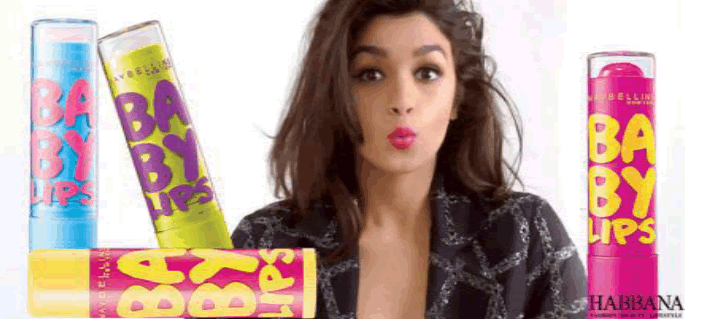
Rahul Bose is a famous Bollywood celebrity/actor. He was chosen to endorse Livon’s new product ‘Hair Gain Tonic’. Rahul being a victim of early age baldness is a real life example of men worried about their receding hair ling. Livon did a creditable job by choosing a celebrity who could endorse its hair gain product by connecting it with his personal problem and recommending the audience to buy this product.
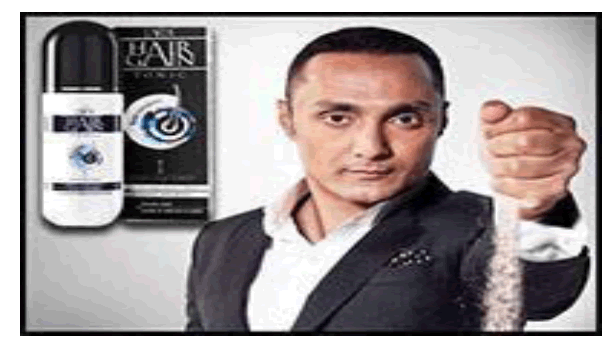
The customers not only did get the message delivered by the advertisement but also were able to recall the brand due to the popularity of the endorser.
Polio is an infectious viral disease that mostly attacks small children. It still prevails in most of the rural segment of our country due to lack of awareness and education. Rural people tend to pay attention to the talks of famous and well known personalities. Since they don’t understand much of the science and medicine, therefore if explained by a person who is well known instead of common doctors, they understand it better. Therefore Amitabh Bachchan, the most known face of Indian entertainment industry was chosen as the brand ambassador of the Pulse Polio campaign with a mission to eradicate polio from the country. The awareness of this campaign was a huge success with vast number of people from remote areas came to give their children polio vaccine. This is a perfect example which showed the importance of the impact of a popular public figure on the audience and how it can capture their attention if used in the right direction and for a proper purpose.
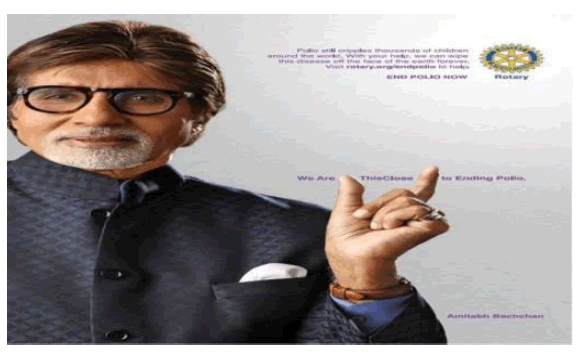
Non Celebrity Branded Products: (Positive)
These are a few examples of advertisements done by unknown characters or unpopular models/actors that are new to the industry. These advertisements show how using an unpopular image made a profound impact on the audience which might not have been the case if a famous celebrity would have been used. These are some of the endorsements that used other features like sound, music, motion, etc. as an attention getting device (AGD) instead of going for a regular celebrity endorsement.
This Airtel endorser, also known as the ‘Airtel 4G girl’ has gained a sudden and plenty of popularity in the market. Sasha Chettri comes in different ads of Airtel 4G where she showcases the speed and connectivity offered by the 4G plan in extremely remote areas. The common information which these short cum funny ads provide is the ability to connect to internet in very remote areas and being very user friendly to all class of people.
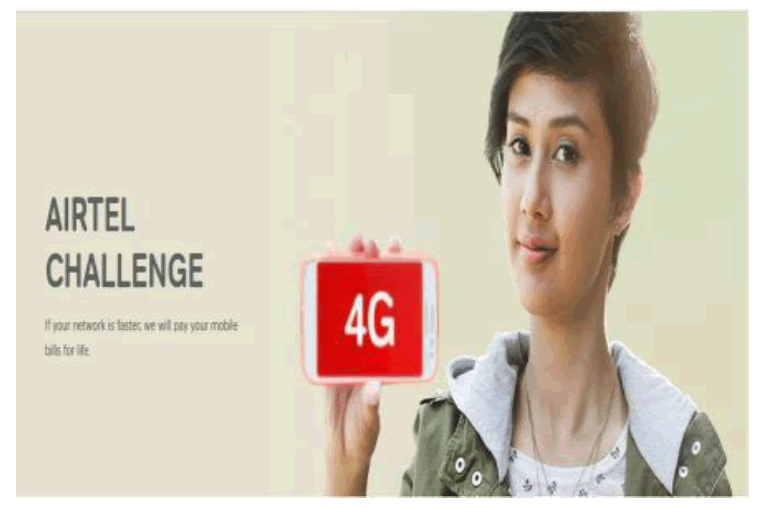
A lot of people bought this data plan and many users switched to Airtel due to the benefits it had to offer. The advertisement gained a lot of popularity with this girl and the information given out was loud and clear.
The advertisement of the chocolate Cadbury 5Star became tremendously popular in the market because of the two characters ‘Ramesh and Suresh’ who acted as brothers in the advertisement. They would go into another world on taking the first bite of 5Star, completely forgetting about the surroundings and then later acknowledging each other as if they have met after a very long time thus portraying the enchanting effect of the taste. The ad gained popularity instantly and people were seen enacting the dialogues from the advertisement. Along with the two characters, the product recall value also saw hype due to being tightly interlinked.

Vicco penetrated the market due to two things, one being a completely natural/ayurvedic product with the main ingredient of turmeric which is highly medicinal and the other is the use of a super attractive song as an attention getting device. This song was on the tip of every child like a poem learnt in kindergarten. The lyrics of the song gave away all the important features and information about the product thus finding their way into the market very easily. The idea of featuring the advertisements with a song came in very hands and was also seen used by other brands like the washing powder ‘Nirma’ and ‘CloseUp’ toothpaste.
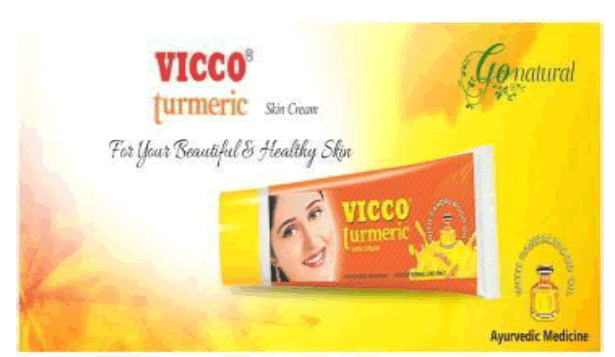
Celebrity Branded Products: (Negative)
The following are a few examples of a celebrity endorsement getting negative publicity or no publicity at all. They show how sometimes choosing an unrelated celebrity can cause vampire effect on the product as well as the brand.
Idea came up with a new advertisement to introduce its new internet 3G data plan into the market. The idea was to create an image of the 3G service or Idea Internet Network (IIN) equivalent to an educational institution which can provide all the information and knowledge to become a graduate. The ads covered a guy making a drone, bike, starting a restaurant, becoming a professor, learning sitar just by referring to the internet. The campaign gained a lot of negative publicity and many trolls were also made on social media. A wrong message got conveyed to the audience and negative brand recalling happened which leaded to occurrence of vampire effect. It was a big hit on Idea’s marketing strategy.

Any beauty product automatically creates an image of a female character in our mind, be it fragrance, beauty or skin care. Lux on the other hand made a big mistake of introducing a male celebrity for its soap endorsement. Though the celebrity it chose, Mr. Shah Rukh Khan happens to be one of the biggest stars of Bollywood and has the highest fan following, the idea of him taking a bath in a bath tub and feeling the fragrance didn’t really made scene. Immediately the advertisement turned into a funny clip with people only remembering the famous celebrity and not the brand. This was a perfect example of no relation between the endorser and the product and occurrence of vampire effect.
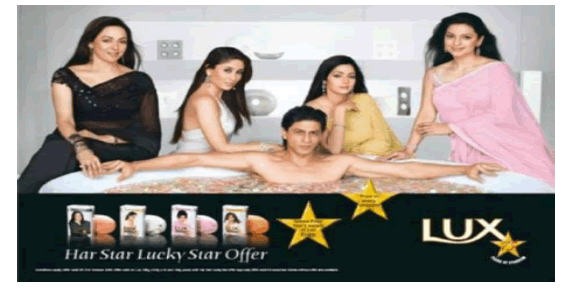
The famous Bollywood actress Katrina Kaif was seen endorsing a tile brand called Johnson Tiles. As we can see the relativeness of the celebrity to the product could hardly be understood, the audience could not really get the message given through the advertisement. The celebrity was well acknowledged and identified but the brand recall was nearly negligible. A huge shadowing of the celebrity image took over the product leading to a major vampire effect.
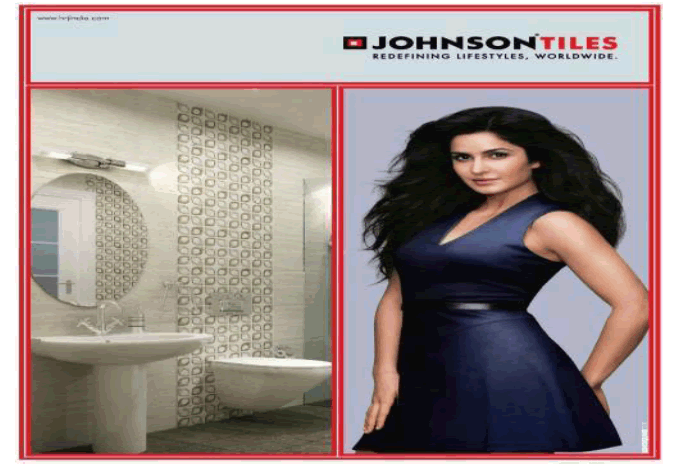
Suggestions
The best way to avert vampire effect from occurring is to pick a celebrity which connects with the product and brand’s image. The brand-endorser relation should make sense to the audience so that they can comprehend the message given out through the advertisement and later able to recall it as well.
Also the audiences have evolved to become more informative and more qualitative. They need more to choose the best one from. Therefore in order to make your product stand apart from the rest, the company should grasp their attention by trying out new AGD’s like music, dance, storyline, etc. Including something different from the usual celebrity endorsement in the marketing strategy may give a boost to the sales of the product. In order to avoid these types of Vampire affect some of the companies made their brands as celebrities rather than going for real celebrities. One better option of reducing the vampire effect is to use related celebrity rather than using some one very much unrelated or it better that we don't use the celebrities.
Conclusion
The occurrence of vampire effect has been seen among various advertisements, celebrities and practices. The best way to prevent vampire effect form happening is to pick a celebrity or any endorser for that matter which connects to the product and the brand. The brand-endorser relationship is very important of get the audience understands the message delivered through the advertisement. This brand-endorser relationship helps to develop a cognitive link in the customer’s mind which he/she can relate to and comprehend in a better way. This not only gets the message out properly but also creates a strong brand familiarity amongst the customers. And once a good brand familiarity is developed, the recall value will instantaneously rise. Therefore, a high endorser-brand similarity and the ability to set a cognitive link in the customer’s mind are the two key elements to avert the vampire effect.
References
- Kuvita, T. & Karlí?ek, M. (2014).The risk of vampire effect in advertisements using celebrity endorsement. Central European Business Review, 3(3).
- Okorie, N., Oyedepo, T. & Akhidenor, G. (2012). The dysfunctional and functional effect of celebrity endorsement on brand patronage. Online Journal of Communication and Media Technologies, 2(2), 141-152.
- Zafer, E.B. (1999). Celebrity endorsement: A literature review. Journal of Marketing Management, 15, 291-314.
- Solanki, S.P. & Sheth, B.H. (2016). Effectiveness of advertisements: A study on comparative analysis of celebrity-endorsed advertisements versus animated-character-endorsed advertisements for children rupkatha. Journal on Interdisciplinary Studies in Humanities, 8(1), 308-321.
- Awasthi, A.K. & Choraria, S. (2015). Effectiveness of celebrity endorsement advertisements: The role of customer imitation behaviour. Journal of Creative Communications, 10(2), 215-234.
- Erfgen, C., Zenker, S. & Sattler, H. (2015). The vampire effect: When do celebrity endorsers harm brand recall? International. Journal of Research in Marketing, 32(2).
- Hudak, K.C.A (2015). Phantasmic Experience: Narrative connection of dead celebrities in advertisements. Culture, Theory and Critique, 55(3), 383-400.
- Srikanth, J., Saravanakumar, M. & Srividhya, S. (2013). The impact of celebrity advertisement on Indian customers. Life Science Journal, 10, 59-65.
- Parmar, B.J. & Patel, R.P. (2014). A study on consumer perception for celebrity & non celebrity endorsement in television commercials for fast moving consumer goods. Global Business and Economics Research Journal, 3(2), 1-11.
- Mukta, D. (2013). Impact of celebrity endorsement on customer’s buying behaviour with reference to Indore city. Altius Shodh. Journal of Management & Commerce, 1(2), 217-221.
- Deepika, C., Kanchan, N. & Neeta, V.S. (2015). Study of impact of celebrity endorsement on consumer buying behaviour. International Conference on Technology and Business Management, 417-423.
- Pei-Shan, W. & Hsi-Peng, L. (2013). An examination of the celebrity endorsements and online customer reviews influence female consumers’ shopping behaviour. Computers in Human Behaviour, 29, 193-201.
- Wilson, E.D. & Chosniel, E.O. (2013). Celebrity endorsement and consumer buying behaviour: Enhancing the promotion function of marketing in the central business area of Accra, Ghana. European Journal of Business and Management, 5(25), 197-208.
- Khandai, S. & Agrawal, B. (2012). Efficacy of celebrity endorsement advertisements and its impact upon consumers' brand preference and purchase decisions: An Indian perspective. International Journal of Knowledge, Culture and Change Management, 11(4), 258-272.
- Muda, M., Musa, R., Mohamed, R.N. & Hamzah, H. (2011). The influence of perceived celebrity endorser credibility on urban women's responses to skincare product advertisement. IEEE Colloquium on Humanities, Science and Engineering, 620-625.